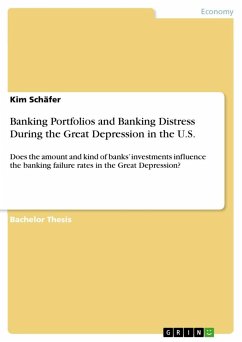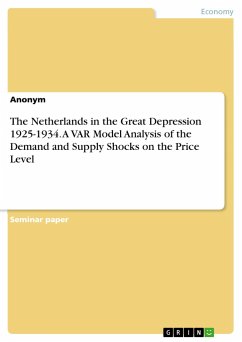Bachelor Thesis from the year 2015 in the subject Business economics - Economic and Social History, grade: 1,3, EBS European Business School gGmbH, language: English, abstract: The general structure of the United States' banking system played an immense role in most of the theories explaining the reasons for the financial crisis and its subsequent banking failures of the Great Depression. Therefore, the paper starts with a brief explanation of the American banking system, its importance and the general structure, in order to prove sound previous knowledge to better understand the following theories. In the third chapter a comprehensive overview of the financial crises during the Great Depression is given, all significant aspects that could have influenced or even triggered the financial crises are explained and defined, and different views of researchers are provided. The financial crisis' main focus of the Great Depression was on the extraordinary high banking failure rates and therefore the main objective of this paper is to investigate whether it would have been possible to forecast the high failure rates on the basis of the bank's balance sheets before the Great Depression or not. Therefore, a comprehensive definition, its emergence in connection with the Basel Accords, and different measurement methods are provided. Due to the fact that the economy has to face financial crises again and again it is time to figure out models that might forecast financial crisis. Therefore, characteristics of former financial crisis have to be analysed in a manner that tell whether it would have been possible to forecast banking failures. In this study it will be investigated whether banks' balance sheet could be a foundation of such theories. For this reason, the study is subdivided into three major parts. First of all, it is tested whether investments of banks influence banking failure rates at all by means of a regression model. In the second part of the study it isinvestigated whether banks in the United States were more likely to run illiquid or insolvent during the Great Depression. In order to come to a conclusion, the value at risk is compared to equity and working capital. Last but not least the study examines whether there is a "proportional connection" between banking failure rates and the value of risk, depending on the amount the banks invested in the different asset type. The conclusion will summarize all findings and link it to the literature of the paper.








